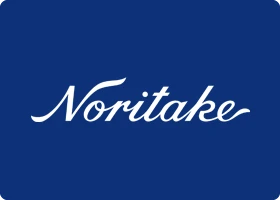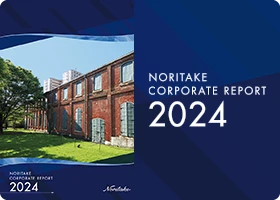Fillers
Ceramics & Materials
- Electronic Paste (Thick Film)
- Gypsum
-
Engineering Ceramics
- Engineering Ceramics List
- Ceramic cores for precision casting
- Porous ceramic component
- Decoration Materials
- Electronic Ceramic Powder
- Vacuum Fluorescent Display
- Thick Film Circuit Substrate
- Dental Materials
- Technical Support
- Technical Support List
- What is decalcomania?
- Thick Film Circuit Substrate with Precious Metal design guidance
- About Our Technology
- New Copper Conductors + Plating Substrate design guidance
- Thick Film Circuit Substrate with Copper Conductors design guidance
- Thick Film Heater design guidance
- Catalog Lineup
- Pore size control for porous ceramic components
- Core Material Characteristics
- ℃ MONARC Characteristics
- Catalog Download
- About Our Sales Offices
Plaster contains hemihydrate plaster (plaster of Paris), which is widely used as a construction material, and can take four main forms depending on the degree of hydration of the crystals. These forms have their own distinct characteristics and are used as additives in a wide variety of fields, including food additives, resin fillers, trace moisture removers, and civil engineering.
Uses
Desiccants, absorption inhibitors, function modifiers, fillers, and more
Lineup
*For more information on specifications, contact us for details regarding usage conditions.
Dihydrate Plaster: Raw Plaster A

-
Raw Plaster A is made using carefully selected raw ingredients. It is low on the hardness scale (Mohs hardness 1) and is used in a wide variety of fields for filler agents of various kinds.
Areas of use
Filler for paints and resins, agrichemicals, incense, fertilizers, and morePackaging
25kg
Dihydrate Plaster: P52A

-
P52A is made using carefully selected raw ingredients. It is used in a wide variety of fields for filler agents of various kinds.
Areas of use
Filler for paints and resins, agrichemicals, incense, fertilizers, and morePackaging
20kg
Dihydrate Plaster: P52B

-
P52B is made using carefully selected raw ingredients. It is used in a wide variety of fields for filler agents of various kinds.
Areas of use
Filler for paints and resins, agrichemicals, incense, fertilizers, and morePackaging
20kg
Hemihydrate Plaster: Alpha P21A

-
Alpha P21A is made by firing carefully selected raw ingredients. The transformation to dihydrate plaster produces moisture absorbency (moisture adsorption), and it is used as a desiccant for paints and resins, and as a filler in many different fields.
Areas of use
Desiccating agent for resins and paints; filler for resins and paints; agrichemical carriers; plaster board; plaster putty; polishing fixatives; and more.Packaging
25kg
Hemihydrate Plaster: Beta TA-85N

-
Beta TA-85N is made by firing carefully selected raw ingredients. The transformation to dihydrate plaster produces moisture absorbency (moisture adsorption), and it is used as a desiccant for paints and resins, and as a filler in many different fields.
Areas of use
Desiccating agent for resins and paints; filler for resins and paints; agrichemical carriers; plaster board; plaster putty; polishing fixatives; and more.Packaging
25kg
Hemihydrate Plaster: Beta SB

-
Beta SB is made by firing carefully selected raw ingredients. The transformation to dihydrate plaster produces moisture absorbency (moisture adsorption), and it is used as a desiccant for paints and resins, and as a filler in many different fields.
Areas of use
Desiccating agent for resins and paints; filler for resins and paints; agrichemical carriers; plaster board; plaster putty; polishing fixatives; and more.Packaging
25kg
Hemihydrate Plaster: Beta FT-2

-
Beta FT-2 is made by firing carefully selected raw ingredients. The transformation to dihydrate plaster produces moisture absorbency (moisture adsorption), and it is used as a desiccant for paints and resins, and as a filler in many different fields.
Areas of use
Desiccating agent for resins and paints; filler for resins and paints; agrichemical carriers; plaster board; plaster putty; polishing fixatives; and more.Packaging
20kg
Type-II Anhydrous Plaster: D-700

-
D-700 is made by using carefully selected raw ingredients. It exhibits no moisture absorption or hydration hardening, and because it contains no crystallized water, it is used as a filler in heat-resistant engineering plastics. It is used in a wide variety of fields for filler agents of various kinds.
Areas of use
Additive for special cements, filler for (heat-resistant) resins and paints, and more.Packaging
25kg
Type-II Anhydrous Plaster: D-101A

-
D-1 is made by firing carefully selected raw ingredients at high temperatures. The transformation to hemihydrate plaster produces extremely good absorbency (instantaneous absorption of moisture from the air). It is used as a desiccant for paints and resins, and as a filler in many different fields.
Areas of use
Trace moisture remover for resins and paints, filler for resins and paints, and morePackaging
10kg
Main reference values
| Type | Product name | Purity (%) CaSO4 |
Median diameter (μm) |
Usage characteristics | Usage applications |
|---|---|---|---|---|---|
| Dihydrate plaster (CaSO4・2H2O) |
Raw Plaster A | - | - | Calcium sulfate component Powder characteristics (e.g. feature modifications) |
Filtration aid, antibiotic culture medium Filler for resins and paints, agrochemicals, incense, fertilizers, etc. |
| P52A | 95 | 40 | |||
| P52B | 95 | 20 | |||
| Hemihydrate plaster (CaSO4・1/2H2O) |
P21A (alpha plaster) |
95 | 25 | Note 1: Moisture absorbency Powder characteristics (e.g. feature modifications) Calcium sulfate component Hydration and hardening |
Desiccant for resins and plastics Filler for resins and plastics Agrochemical carrier Plaster board, plaster putty Polishing fixative, and more |
| TA-85N (beta plaster) |
95 | 10-25 | |||
| SB (beta plaster) |
95 | 20 | |||
| FT-2 (beta plaster) |
95 | 20 | |||
| Type-II anhydrous plaster (IICaSO4) |
D-101A | 95 | 20 | Calcium sulfate component Powder characteristics (e.g. feature modifications) |
Additive for special cements Additive for special cements, filler for (temperature-resistant) resins and paints, and more. |
| D-700 | Note 1: 85 | 15~30 | |||
| Type-III anhydrous plaster (IIICaSO4) |
D-1 | Note 2: 90 | 20 | Note 2: Absorbency (desiccation) Powder characteristics (e.g. feature modifications) |
Desiccant for resins and paints Filler for resins and paints, and more |
※左右にフリックすると表がスライドします
Note 1: “Moisture absorbency” refers to the material’s ability to absorb moisture (water droplets).
Note 2: “Absorbency” (“desiccation”) refers to the material’s ability to absorb moisture from the air.
*1: II-CaSO4 is at least 95% pure CaSO4.
*2: III-CaSO4 is at least 95% pure CaSO4.









